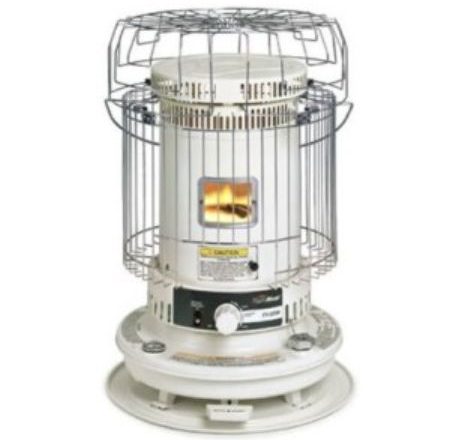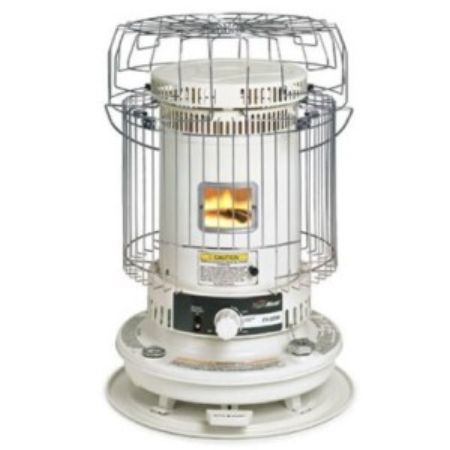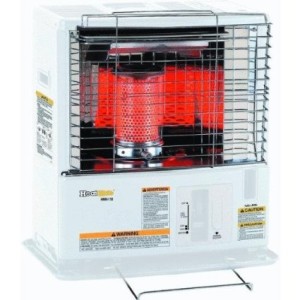You ask and we listen! Here’s a post from an idea I took from a comment awhile back. Thanks for the ideas and please keep them coming.
If you live in the north like I do there will come a time when the power goes out and it gets cold in the house. For those of you who live in the south, 30 degrees Fahrenheit doesn’t really count as cold weather. It can get uncomfortable if the heat goes out, but it’s not that bad. It gets bad when the temps are in the teens or below zero and your heat system stops producing.
And you don’t necessarily have to be out of power in order to lose heat. If you forget to pay your heating bill (oil for most people in the Northeast) you might find yourself in the cold. Or you might get cold if you run out of firewood, or if the furnace malfunctions, and so on. All of these have happened to me or people I know and believe me, it’s no fun when it gets cold in the house when the outside temp is way below freezing.
Scenario
Let’s assume that you’ve lost power in your home and it’s going to be in the teens for the next week. Your mission is to keep your family as warm and comfortable as possible during this time. If you’re snowed in, or low on funds, going to a hotel for a few days isn’t going to be an option, so you’d better have a few ideas set aside for just such a scenario.
Here’s what I’ve done in the past to stay warm.
First, figure out what rooms in the house really need to have heat. When the power goes out I’ll usually just heat a couple of rooms to keep the family warm. If the rooms I decide not to heat don’t have doors I’ll hang blankets over the doorways to keep the heat where I want it. For example, if I decide I want to heat the living room and kitchen and maybe a bathroom that’s connected to this area I’ll wall off everything else and just focus on using my heat in those areas.
If the power still hasn’t come on by bed time I’ll open up a bedroom and get it warm enough for the family to sleep in.
Clothing
Dress warm. Get out your long johns and wool sweaters and socks. The more clothing you wear the less you’ll be bothered by the cold inside your house.
Heat Sources
What kind of alternative heat sources are out there? Luckily there are quite a few. First of all, don’t depend on electric heat sources because they won’t do you a bit of good if the power goes out. Make sure you read the instructions on whatever it is you decide to use for heat, so you don’t accidentally kill yourself and your family.
Kerosene heaters – these are an excellent source of heat when the power goes out. I always have at least five gallons of K1 standing by along with a kerosene heater or two. I’ve used both types of heaters shown in the pictures here. The round one throws much more heat than the square one. Make sure the wicks are in good shape and burn them occasionally to make sure they don’t need anything in the way of maintenance. This is a radiant heat source, so be careful if you have pets or kids because they will get burned if they touch it. My oldest daughter got a nasty burn on her arm when she was about eight or nine playing near one.
Make sure you vent the room(s) you’re burning this in though because it can emit some powerful fumes, especially if the wick is dirty. If it’s cold outside these heaters won’t make you feel like you’re in a sauna, but will help take the edge off. Some people are more sensitive to the fumes than others and can develop headaches if not vented properly. Having said that I used one of these in a camper for about two years during the winter months and never had any bad side effects from it. I kept the little vent above the heater open and it worked beautifully for me.
Propane heaters – take a five gallon tank of propane like the one attached to your grill and get one of the small propane heaters that attaches to it and you’ve got yourself a nice little heat source. These burn a lot cleaner than K1, but you should still vent them.
Wood stoves – if you heat with wood you’re pretty well good to go. Just make sure you have enough fire wood standing by and if the power goes out you might not even notice the electricity is gone until you go to turn the lights on. Then it’s just a matter of getting your lantern out!
I recently did a post on a military wood stove I use in my tent and if necessary I could hook something like this up in the house in case of an ongoing emergency. I wouldn’t want to use it a long time, but for a short duration emergency it might save the day. It’s big enough to heat a room or two and that’s all I’d need.
I’ll mention pellet stoves here. A pellet stove is an awesome thing to have in your house. I have one and love it; however, if the power goes out they are useless unless you can hook them up to a generator of some kind.
Generator – a generator is a good choice if it’s big enough because you can run a good bit of your house along with the furnace or pellet stove. I have a 5600 watt gennie, which can run the lights, water pump, furnace, freezer and refrigerator, and a few other odds and ends in the house. The things I can’t run are the electric stove and the dryer.
This would be good for as long as you can get fuel for it. When they’re running under load they can suck up fuel pretty fast, so be prepared for that. I don’t think a generator would be ideal for a long term SHTF event, but it would get you by a few weeks if the power was out. Years back during the ice storm up here power was out for some folks for a month and those people who had generators were the ones you wanted to visit.
Another thing about these is that during that ice storm people were stealing generators while they were still running. No joke! If you do get one I’d suggest making sure that it doesn’t walk off by chaining it to your house, or something equally substantial.
One last note: do not use this inside your home!! Every year I hear about someone who set one of these up in their basement and died from carbon monoxide poisoning.
Where you live obviously has an impact on which type of heater to use. For example, if you’re on the 24th floor of a high rise in downtown Manhattan you’re probably not going to opt for a wood stove. Maybe a small kerosene heater with a little fuel set aside might be a better option for you.
If you live in the country like I do a wood stove is the perfect way to heat. (Although I heat with a pellet stove.) Heating with a wood stove has certain logistics required, such as fire wood. This takes up a certain amount of space and if you’re cutting it and splitting it yourself there’s some noise and mess involved. You can tell it’s fall in Maine because you hear the chainsaws firing up from all the neighbors – all three of them.
I grew up with a wood stove in the house and my father used to take us out in the woods to cut down and limb the tree, carry it back to the truck (sometimes in the snow), then take it home where we cut, split and stacked it. You truly learn to appreciate what goes into keeping your family warm when you do firewood this way.
What other ways can you think of to hear your home in the winter months if the power goes out?
Questions? Comments?
Sound off below!







